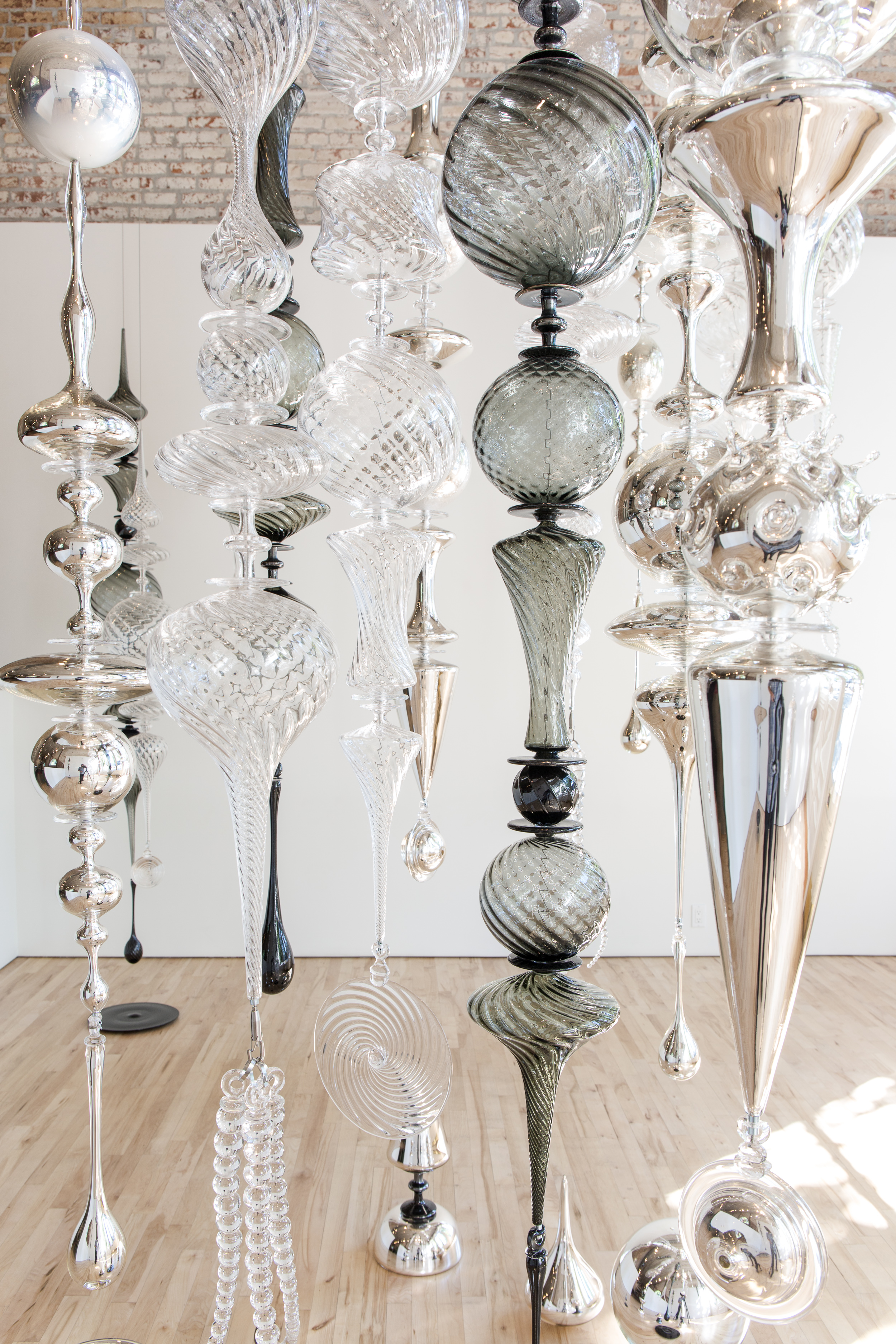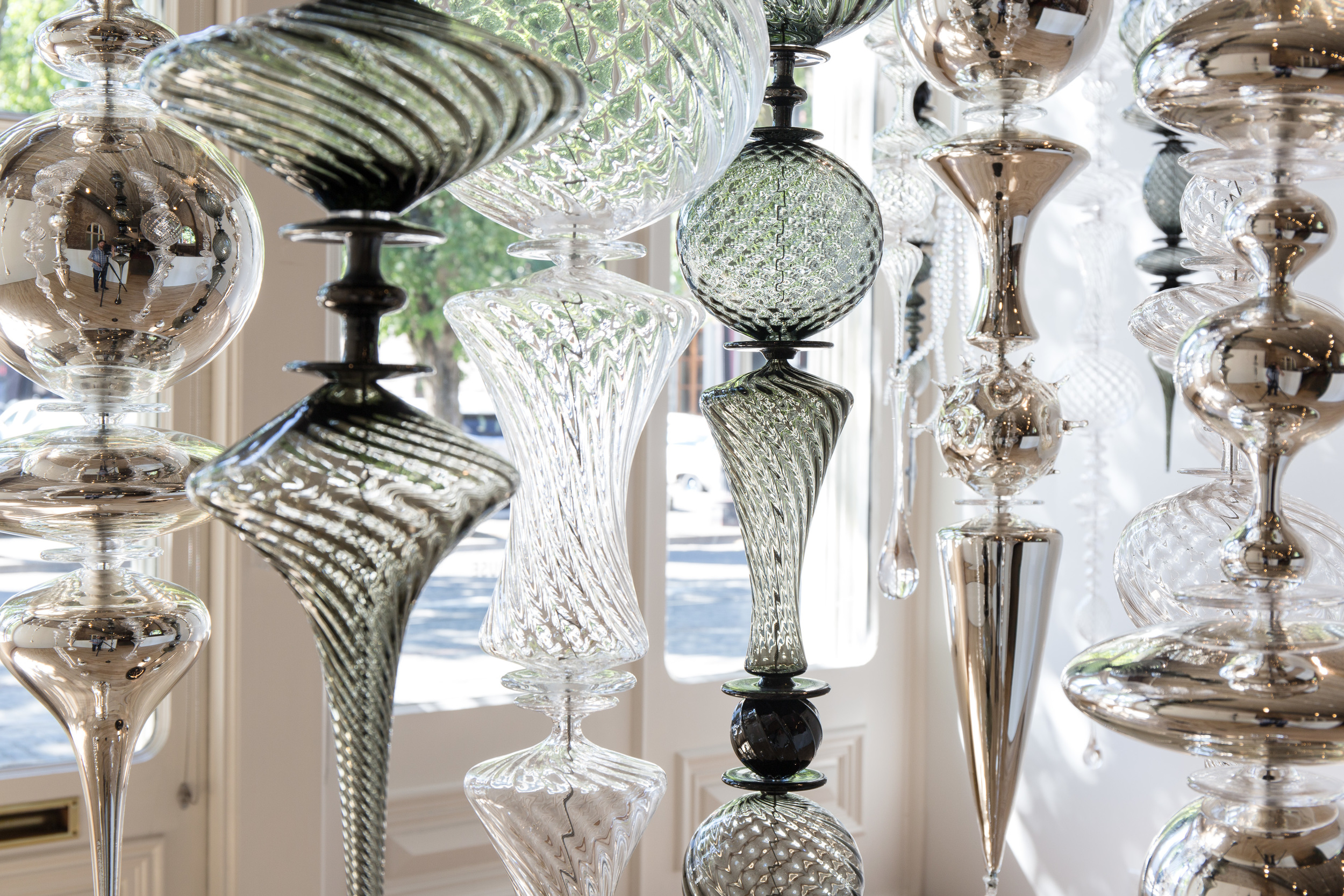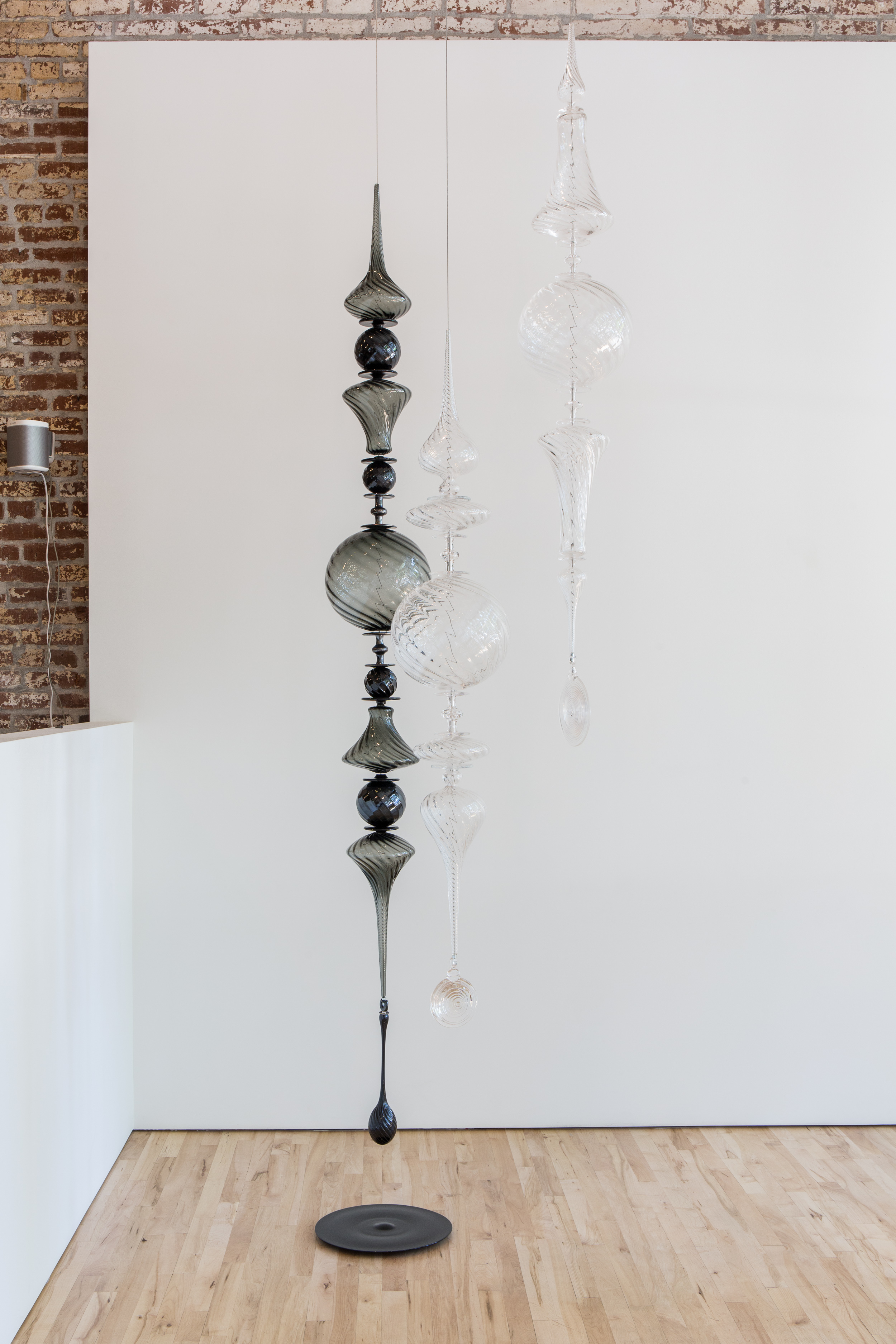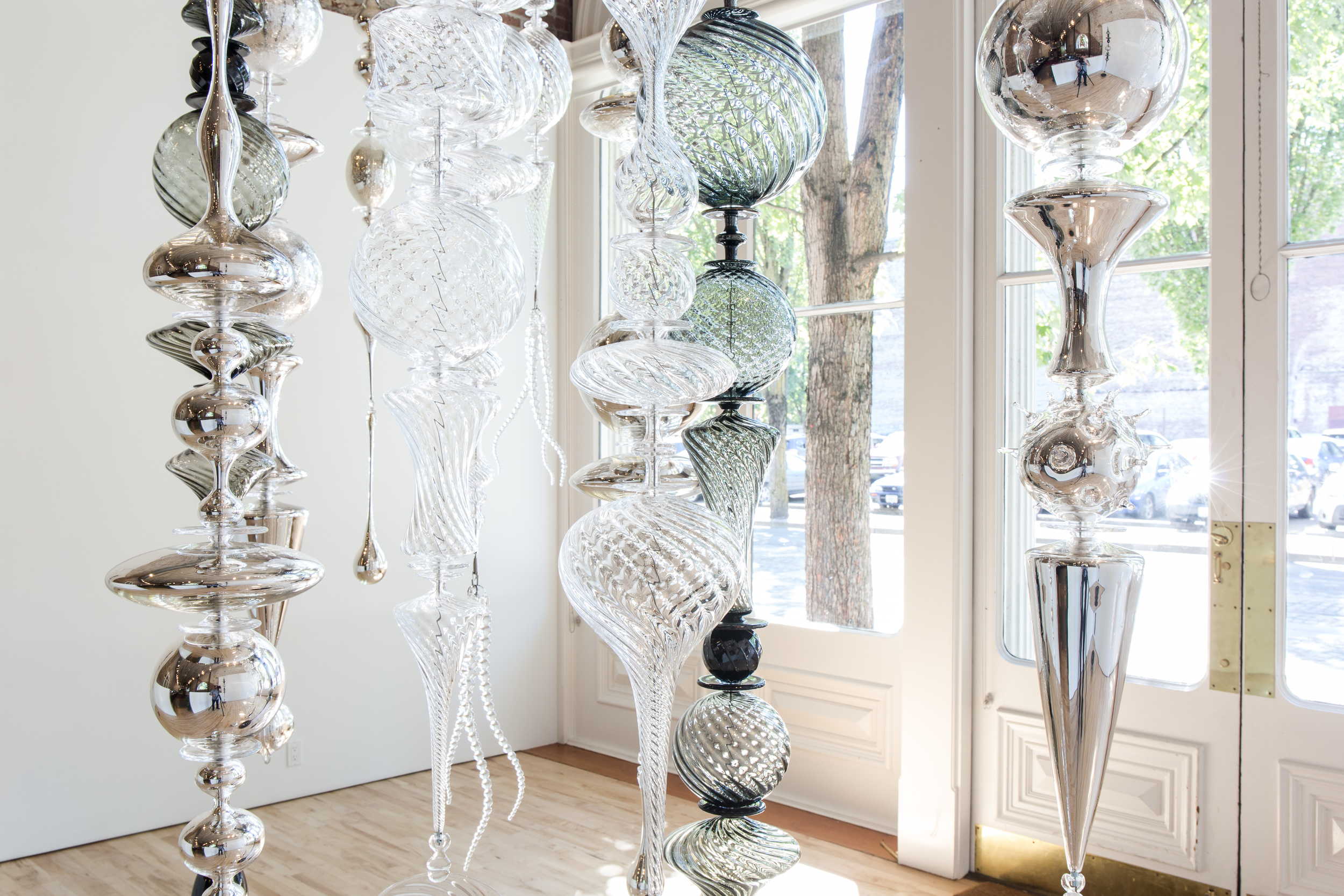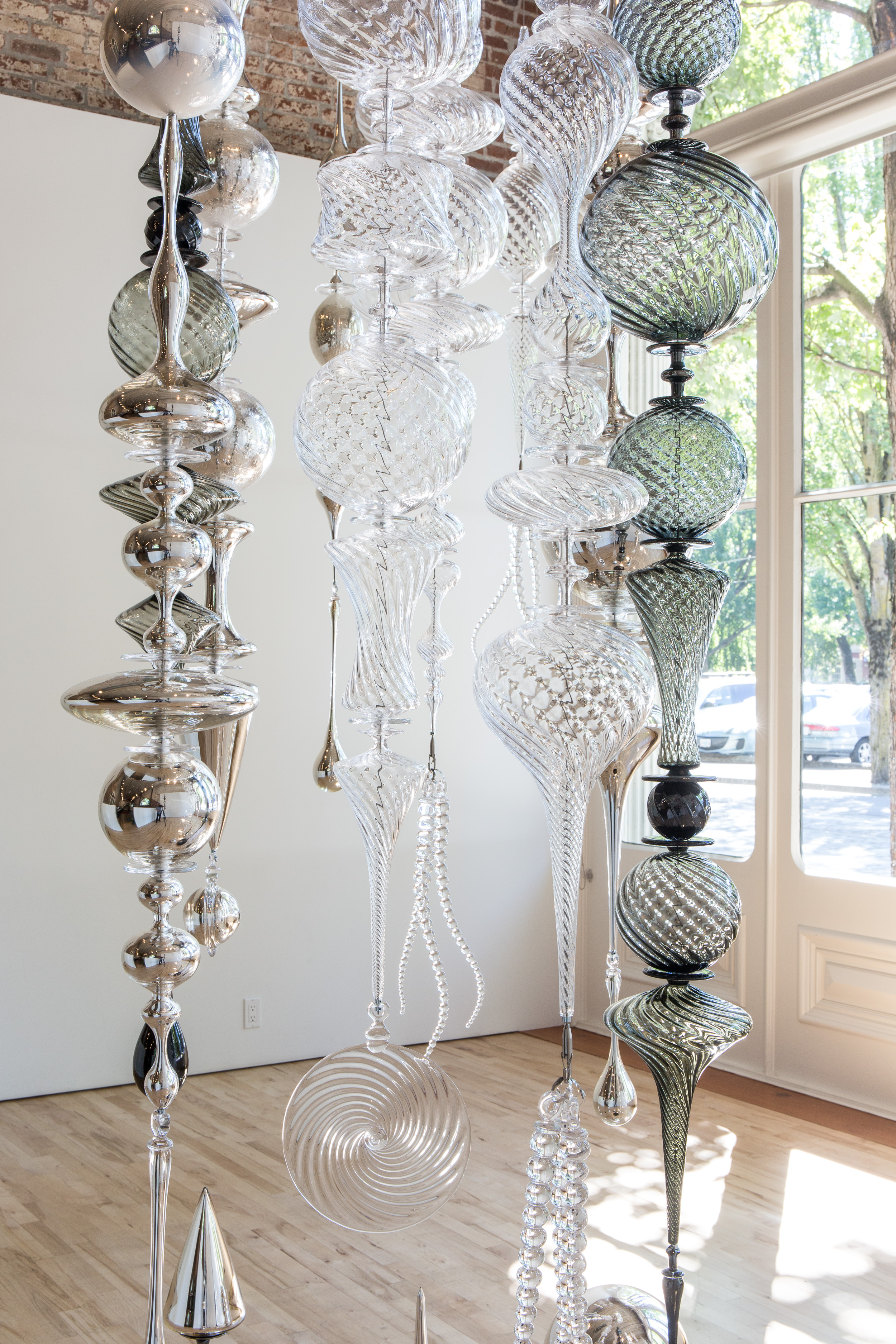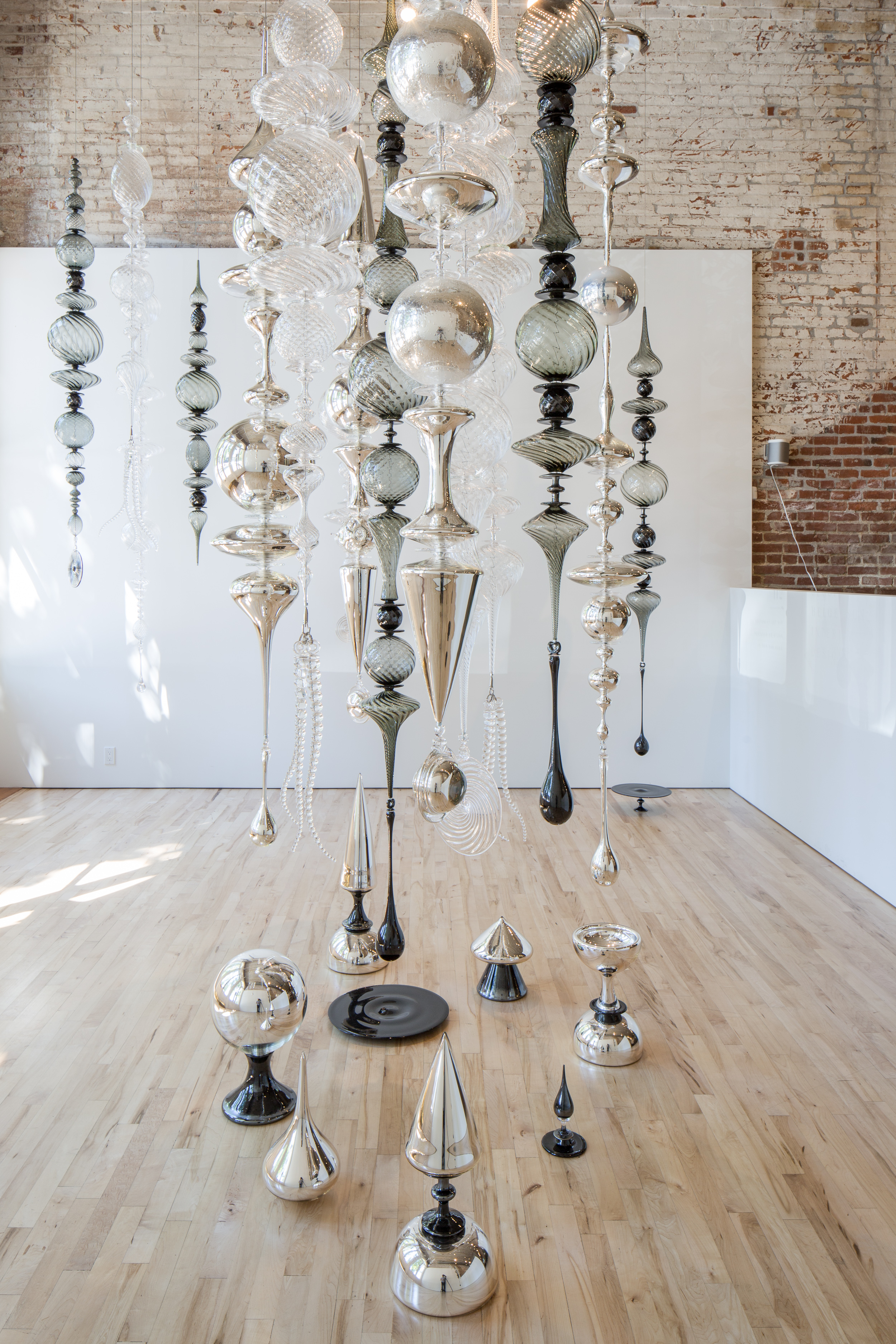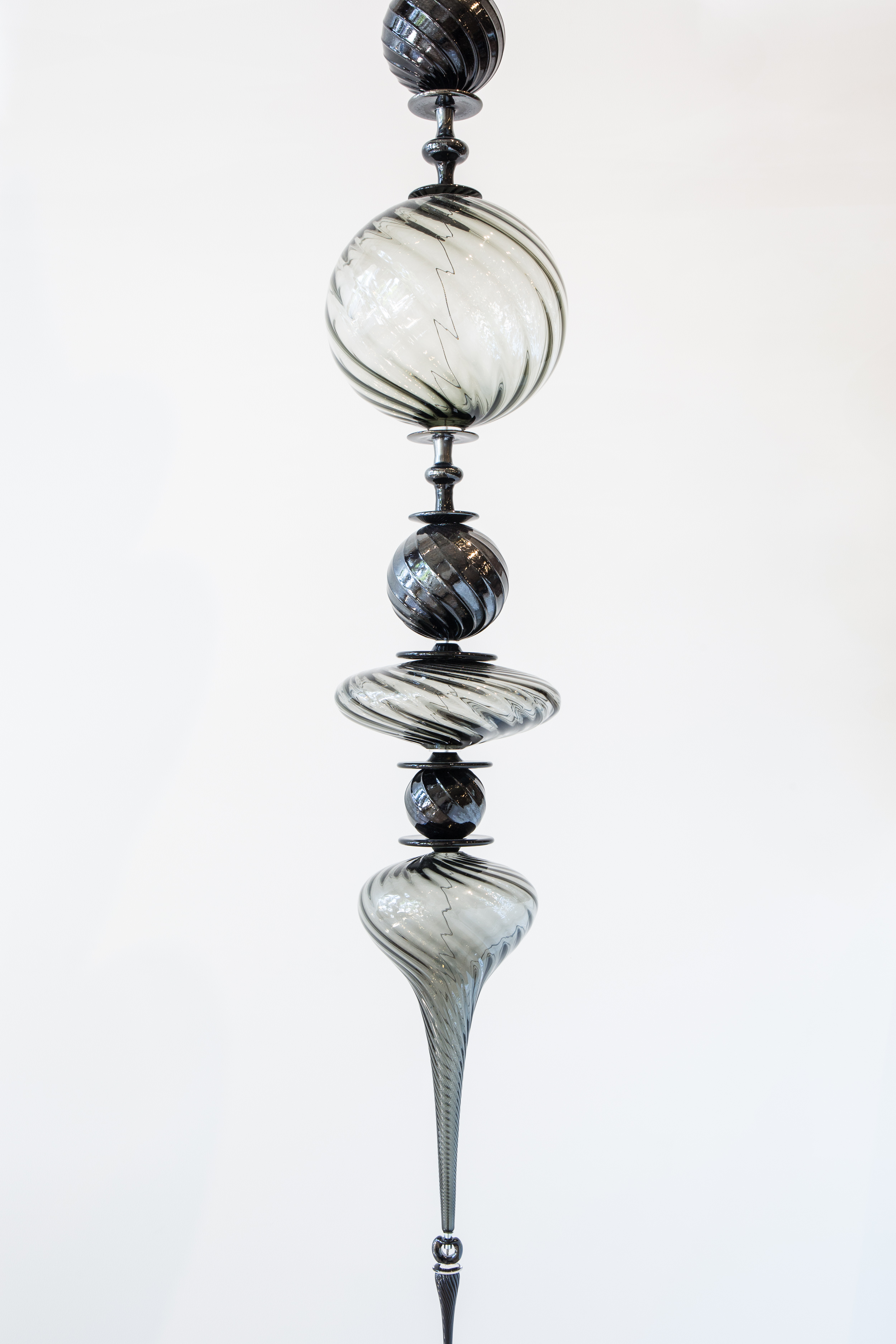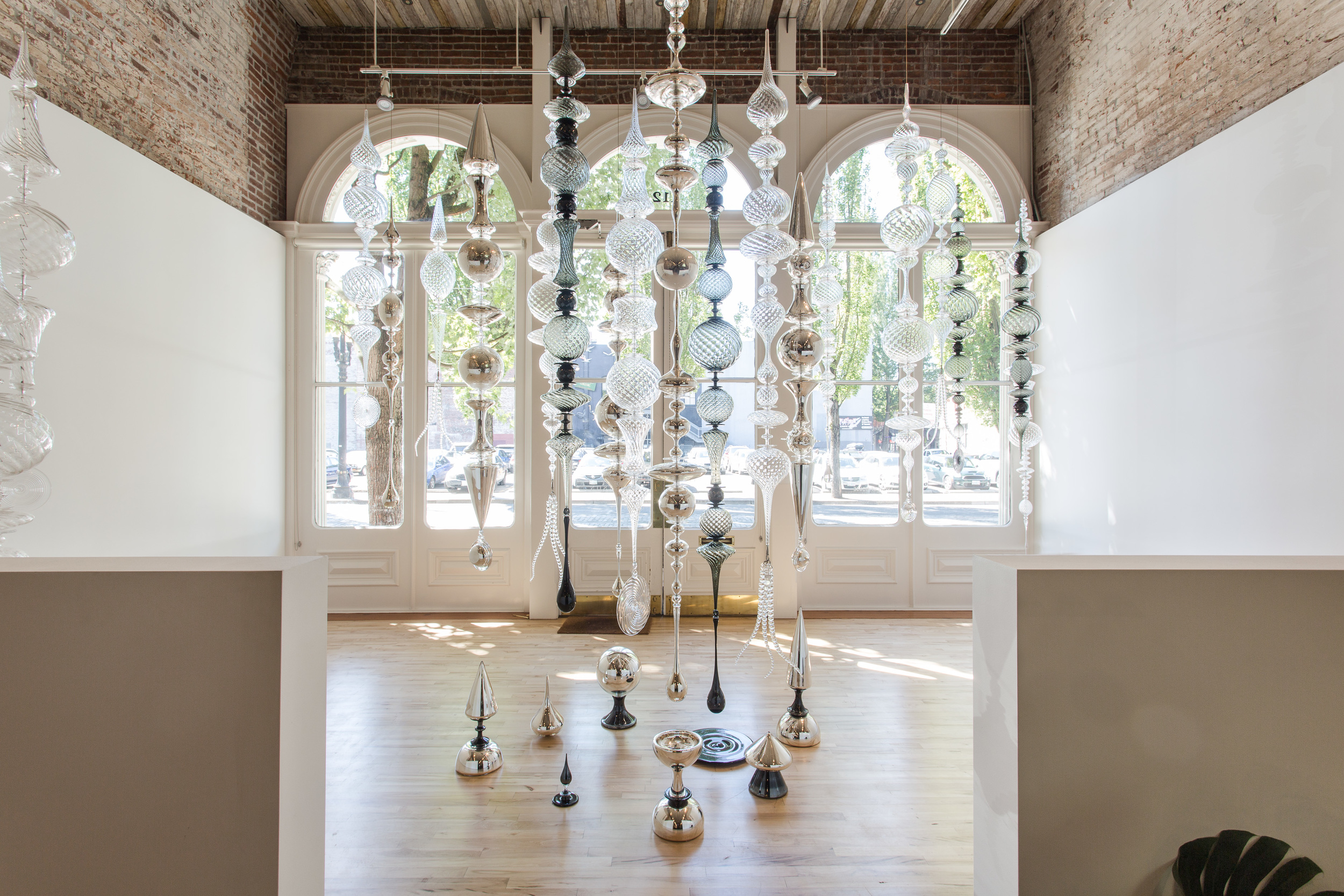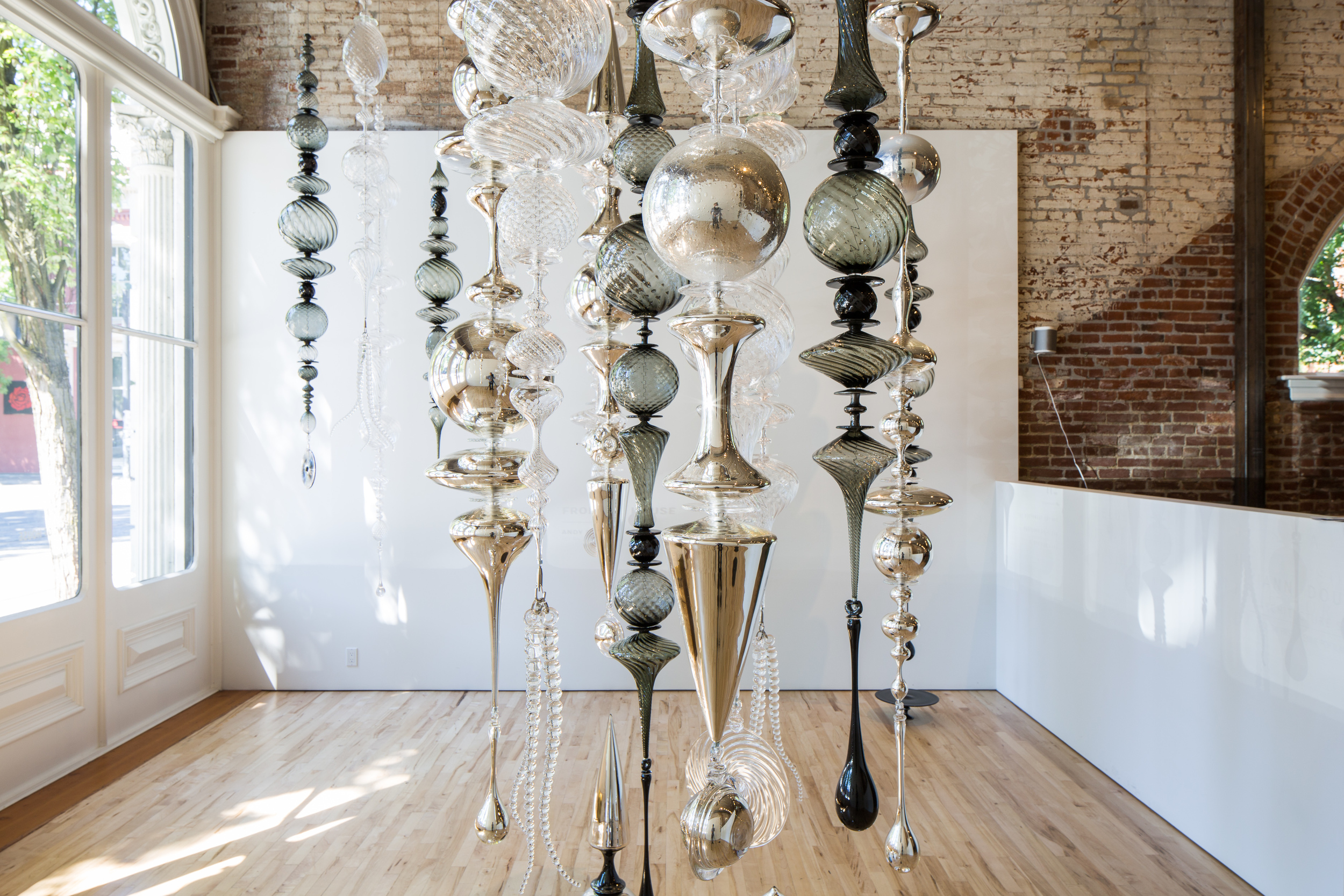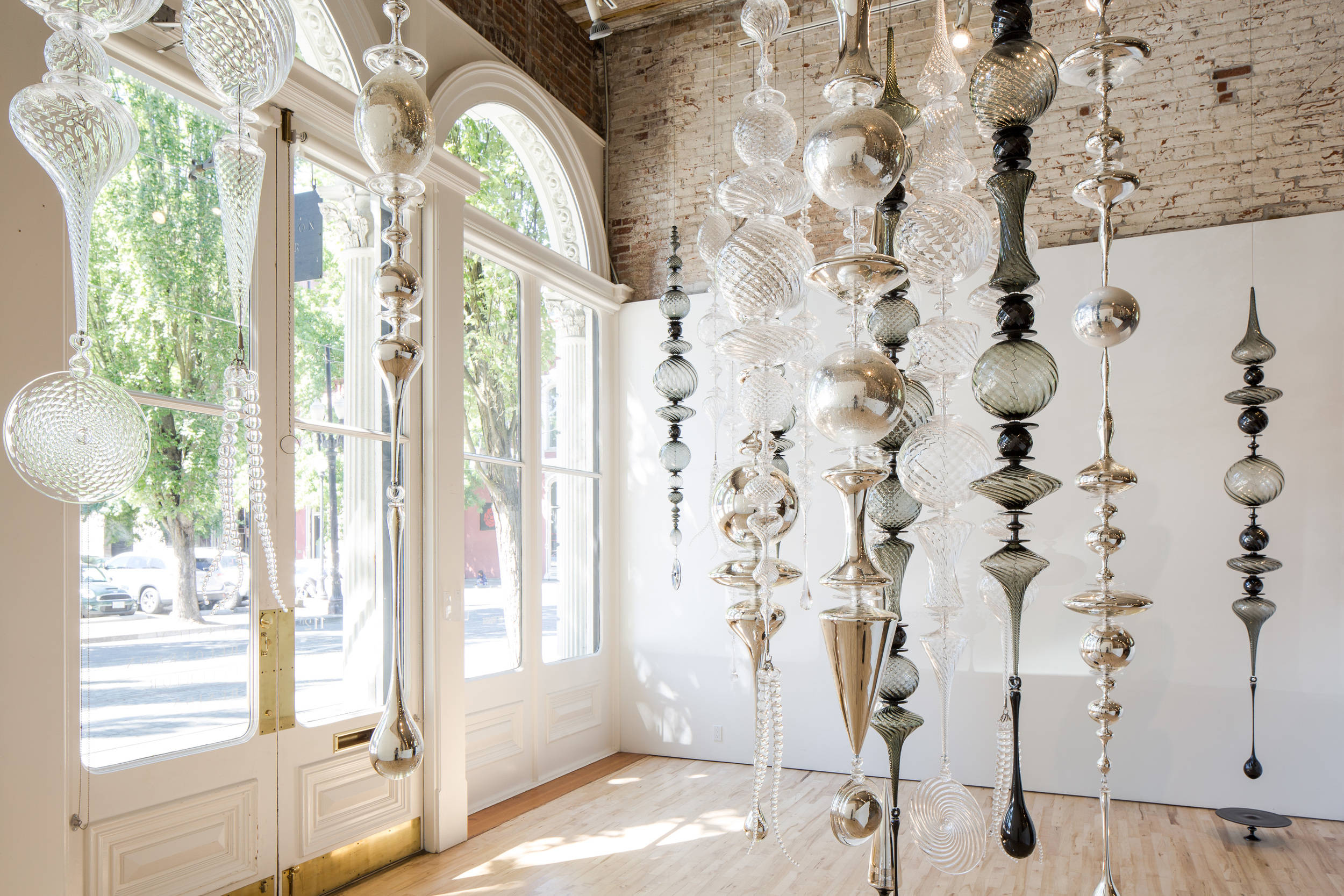ANDY PAIKO
REFRACTIONS MONOLOGUE
PREFACE
Jessica Helgerson
Andy Paiko’s Refraction Monologue is the second installation at Front of House gallery. I have admired Andy’s work for the last decade so I was thrilled when he accepted to create something for our space. I love Andy’s glass pieces for their elegance, their ornateness, and their slightly mad, gothic, playful, extravagant qualities, coupled occaisionally with their rigorously researched and painstakingly accurate explorations of the utilitarian. All beautifully ornate and made of highly decorative usually clear glass, Andy’s earlier work includes a full-scale functional spinning wheel, a kinetic oil pump-jack, and an extravagant glass seismograph.
Andy’s work to date has been primarily object-based and so it was a new direction for him to create an installation of this scale in response to an existing space. I had visited his studio to discuss ideas for the installation, and had seen pieces of the work in progress, but I was nevertheless unprepared for the scale of the work Andy would create and perhaps even more importantly the negative space that it would form. In a sense the negative space in Refraction Monologue becomes the object since it is the ‘useful’ thing that is created. Much of Andy’s work has been circling around the examination of the role of glass in relation to its function; the glass spinning wheel could be used to spin, but would it? The seismograph could accurately measure the earthquake, but would shatter while doing so. . . Though Refraction Monologue explores practicality in the creation of negative space rather than the creation of an object, it does continue to explore those ideas of function and usefulness coupled with an ornate, playful madness.
Front of House is an installation space, but it is also the main passage from our front door into our design office. Andy has created a passage and yet the passer-through is confronted with the same beautiful, surreal absurdity as the user of the seismograph or the spinning wheel. It has been amusing to witness the various reactions that have ranged from delight (nearly everyone) to frustration (the UPS guy) as the visitor must decide which route to take through this forest of glass, how best to ‘use’ the delightfully impractical passage Andy has created.
In Andy’s discussion of his own work he says; “the glassblowing process is an additive one, much like our personalities. Rather than a form emerging from a block of solid stone reductively, forms of glass are pushed into space organically by a cumulative history of layering and motion.” In a sense, though, this installation may have been a first exploration on Andy’s part of a reductive process, with the cube formed by the gallery chipped away through his installation to form a passage.
ARTIST BIOGRAPHY
Glass artist Andy Paiko is known for ambitious, technical works which often explore the metaphorical and symbolic tension of form versus function. His work has been featured in such national and international print publications as American Craft, Hi-Fructose, Make, Glass Art Quarterly, the Corning Museum’s New Glass Review, and is included in public museum and private collections worldwide. Some recent exhibitions include the Renwick Gallery of Decorative Art at the Smithsonian show 40 Under 40: Craft Futures, and the Museum of Fine Arts Boston show Crafted: Objects in Flux. In 2015 he received a Louis Comfort Tiffany Biennial Award. Paiko currently resides in Portland, Oregon.
ARTIST STATEMENT
Refraction Monologue is an elaborate extension of a 2011 collaboration between Paiko and JHID. Originally designed as a permeable visual divider of architectural space, Refraction Monologue presents a curious and playful glossary of exploratory glass forms in corrugated transparent, gray, opaque black, and mirrored surfaces. With emphasis placed on the optic qualities of the glass itself, the subtleties of reflected, refracted, and transmitted light become defined as the viewer moves through and around the space. The suspended forms are intended to articulate undecipherable phrases in a personal, figurative, three-dimensional handwriting. The shapes below act to echo, reverberate, and multiply the visual messages received.

